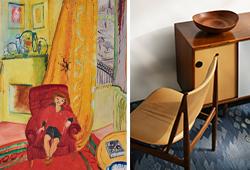Trädgårdsklippa, på träsockel. Japan, 1900-tal. Sockeln signerad.
Skulpterad som en bergsformation. Längd 10 cm. Träsockel medföljer. Höjd med träsockel 7 cm. Trälåda medföljer mått 13x9x9 cm.
Naturliga inneslutningar och schatteringar i stenen.
Proveniens
From a the Collection of a Scandinavian business man with a great interest in Asian and European cearmics and Scholars Art.
Litteratur
The Chinese practice of decorating gardens with rocks was in place by the Han dynasty (206 B.C.–A.D. 220). The specific tradition of the scholar’s rock has been traced back to the Song dynasty (960–1279), and it continued through the Yuan (1279–1368), Ming (1368-1644), and Qing (1644–1911) periods. We often see them in paintings and on porcelain. The Qing period Scholar’s rock on stand, a craggy piece of limestone mounted to a carved wooden base, rewards our contemplation, too. Interesting examples of the scholarly collecting impulse, scholars’ rocks were “favored stones that the Chinese literati and their followers displayed and appreciated indoors, in the rarefied atmosphere of their studios.























































